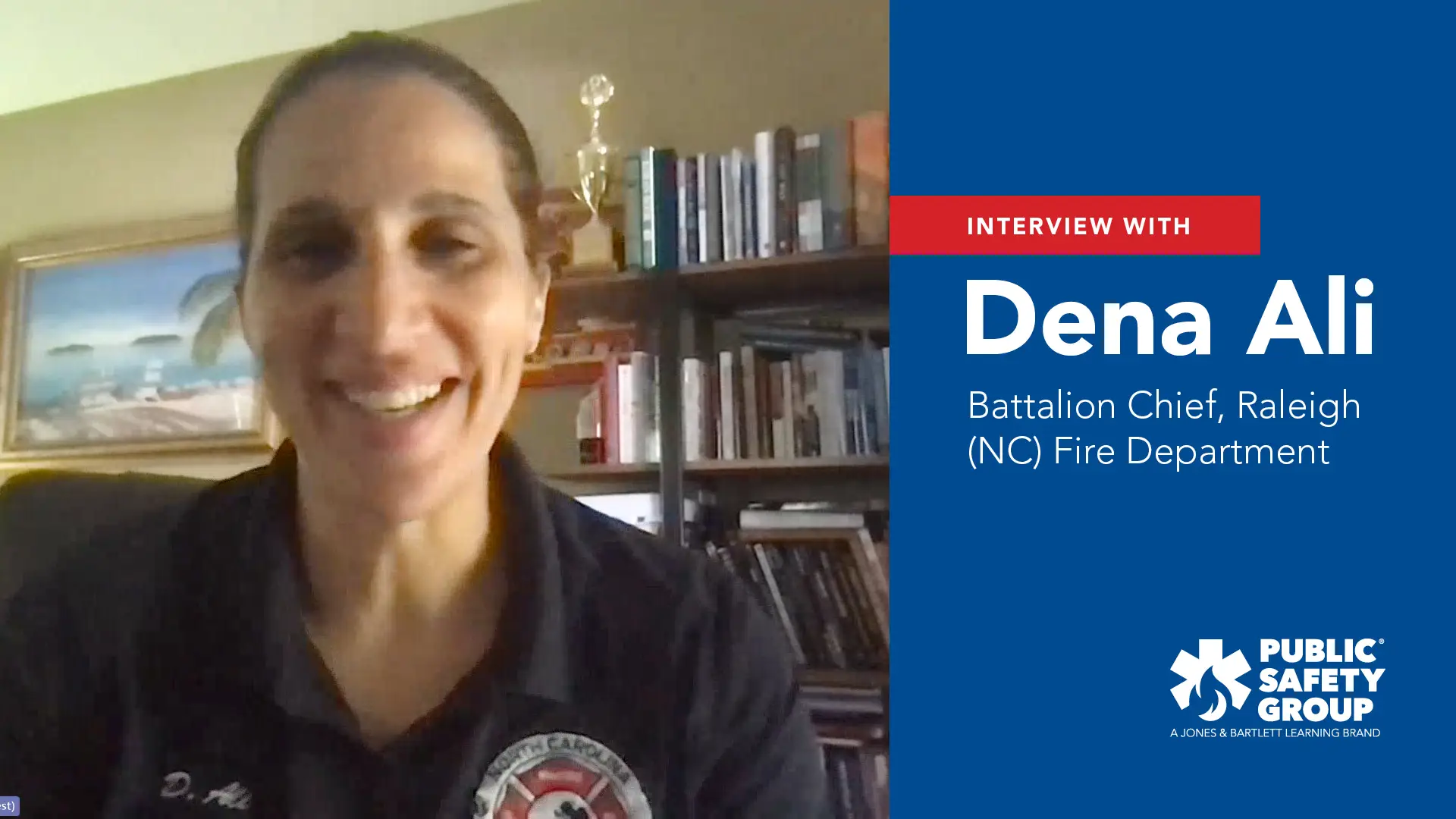Expert on Suicide Prevention in the Fire Service: ‘Hope is Truly the Antidote’

The headlines surrounding suicides in the fire service are often quite bleak. This makes sense, particularly when taking stock of any of the variety of studies that are published which say suicides in public safety are on the rise.
As recently as June of this year, the United States Fire Administration pointed to a study published in the Journal of Safety Research which analyzed suicides among first responders between 2015 and 2017. The findings revealed that first responders made up 1 percent of all suicides during the 3-year span.
Dena Ali is a leading voice in suicide prevention among firefighters, EMS workers and first responders. She agrees that this is difficult news, but she also wants members of the fire service to hear a different message when it comes to suicide.
“We have to avoid framing it as an inevitability of the job,” she says in an interview with Public Safety Group. “When we frame this, we have to include a positive message.”
Ali is a Battalion Chief with the Raleigh, North Carolina Fire Department. She is also the founder and director of North Carolina First Responder Peer Support, a nonprofit collaborative whose mission is to provide support to those in the public safety community of North Carolina who are struggling with suicidal thoughts or mental health.
She says the data coming out on this topic is too narrow, and that mental health is a problem that goes well beyond just the individuals who work in public safety. Rather than consistently cite the ubiquitous data and talking points that point to increased suicides as uniquely a public safety epidemic—data that we have cited on the Public Safety Group blog—Ali says we should frame the conversation around how many individuals have struggled with mental health and found a path to recovery.
“When we frame it this way, those out there struggling find out that there’s hope,” she says. “Hope is truly the antidote to a lot of our problems.”
Her thinking is derived from the National Action Alliance for Suicide Prevention, a public-private partnership which champions suicide prevention as a national priority.
Ali says that suicide in the fire service, and elsewhere in public safety, can be viewed as a problem of “environmental design.” Put another way: Public safety should pursue an approach that makes it harder for individuals to die by suicide.
For example, Ali calls attention to a data point, which was also cited in the Journal of Safety Research Study, that says more first responders use a firearm as the method of injury when compared to non-first responders (69 percent to 44 percent). One solution for this includes asking first responders, firefighters and other public safety officials to keep their firearms locked up somewhere secure when not in use and particularly at night.
“Just knowing that if you keep your firearm locked up, you have to take a few deep breaths before you access it,” Ali says. The effect here is that those few seconds could cause someone to rethink a decision to die by suicide, ultimately saving their life.
She acknowledges the controversy in this approach—that the read on this could come across as trying to take service weapons away from public safety officials—but that there is possibly a more palatable approach too. Ali says that if someone suspects a peer is going through a difficult time, they can ask to hold on to their weapons for a few weeks.
“Just educating people about having conversations when you are worried about somebody,” she says. “It’s just another environmental design.”
Additionally, Ali says there are known correlations with lack of sleep and increased mental health issues. Getting enough sleep—especially rapid eye movement (REM) sleep—is a common challenge for EMTs. But the importance of good sleep cannot be overstated, she says.
“If you don’t get yourself REM sleep, you’re increasing your likelihood of having PTSD,” she says.
Suicide is a public health crisis, Ali says, but not just in public safety: it’s societal.
“This knowledge is evolving,” she says. “I do really appreciate [the idea of] communicating messages of hope…sharing stories of people who struggled, got help, and moved forward beyond that.
“Most people who experience adversity experience growth, especially when they practice self-care, seek counseling when necessary, maintain a tribe, and practice all the coping skills out there that are necessary to practice.”
If you or someone you know are struggling and in crisis, Public Safety Group encourages you to use Safe Call Now, a confidential, comprehensive, 24-hour crisis referral service for all public safety employees, all emergency services personnel and their family members nationwide. Their number is 206-459-3020. Or, call or text the Suicide & Crisis Lifeline at 988.
Related Content:
- Training For Resilience: How Instructors Are Approaching First Responder Mental Health
- Firefighter Training Ideas and Topics for Instructors
- EMS Fatigue is a Serious Problem. Better Education Can Solve It.
Related Products: